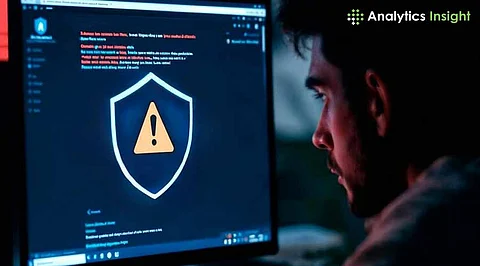

Google’s fight against malware is a continuous battle, especially as threats become more sophisticated. The company uses multiple security layers to detect and remove harmful software, yet undetectable malware presents a unique challenge.
Google has continuously found new ways through which cybercriminals will always refine new techniques in evading detection in keeping pace with the technology coming up.
New security upgrades coming such as AI threat intelligence and YARA-L 2.0 enhance the strength of defenses. Improved functionalities of the advanced YARA-L elevate the detection capabilities by analyzing crypto mining payloads and unauthorized cloud access. Moreover, it expands security really beyond G-ecosystems by scanning Amazon EC2 VM disks for both malware and enhancing cross-detection capabilities against cross-platform threats.
Threat intelligence plays a key role in Google’s security strategy. Crowdsourced YARA rules and behavioral analysis help track advanced persistent threats (APTs) like North Korean APT37’s KoSpy spyware. This collaborative effort enables real-time response to new malware variants. Applied Threat Intelligence (ATI) further refines detection by filtering out blocked or quarantined events, focusing only on active threats.
Strict app store policies add another layer of protection. Google Play’s scrutiny has led to the removal of 180 malicious apps involved in ad fraud. Spyware like Anatsa/Teabot and KoSpy have also been targeted, preventing them from reaching unsuspecting users. Play Protect enhances this security by blocking apps from untrusted sources.
The Advanced Protection Program (APP) adds further safeguards, requiring security keys or passkeys for account access. Even if login credentials are stolen, unauthorized access remains blocked. Download restrictions also prevent risky files from being installed, ensuring that only verified applications can be used.
Inactive account risks are equally addressed. With the fact that inactive accounts tend to have more vulnerabilities to hijacking, Google now deletes any account which has been inactive for two years. This minimizes the chances of the accounts being used in phishing attacks. The dormant accounts are culled to reduce opportunities for cybercriminals to abuse outdated credentials.
Despite these measures, undetectable malware remains a major challenge. Cybercriminals use advanced techniques like obfuscation, encryption, and zero-day exploits to avoid detection. Polymorphic malware further complicates security by constantly altering its code, making traditional signature-based tools less effective.
High alert volumes also contribute to detection gaps. Google had to deprecate some detection rules, such as the "Potential Cryptomining Payload in Cloud Run," due to excessive false positives. This decision, while reducing noise, also increases the risk of missing genuine threats. Additionally, attackers exploit multi-cloud environments, using tactics like unauthorized API calls and exposed public buckets to bypass security layers.
Human vulnerabilities are still the weakest link. Scams through social engineering continue to deceive a user into opening access which means an even more urgent need for phishing-resistant security.
Although Google's APP helps mitigate such risks, it does not completely eliminate the high-profile breach through a sophisticated scheme. Now, they are using AI-powered chatbots to generate forms of phishing emails that make these attacks much more convincing.
While Google’s efforts in malware detection are strong, staying ahead of undetectable threats is an ongoing battle. AI-driven malware and state-sponsored attacks create an ever-evolving threat landscape. Google’s rapid response to threats like KoSpy shows adaptability, but no system can guarantee complete protection.
Independent security tests highlight the risks. Malwarebytes found that competing antivirus tools failed to detect 30–40% of threats. This reinforces the importance of layered security, combining Google’s tools with additional protection measures like endpoint security and phishing awareness training.
Advanced Protection adds extra layers of protection by enabling users to monitor activity on accounts while prohibiting installing any third-party applications. Other important elements of cyber hygiene-such as regularly changing passwords and enabling multi-factor authentication add extra layers of security. Just as Google security tools do, these best practices merge to form an even sturdier defense against not just undetected malware.
Indeed, Google will always be up-to-date and at the forefront of cybersecurity. What is paramount is keeping up with updating developments and staying on guard to remain ahead of those cybercriminals.
Because of these investments, including AI-driven threat intelligence and in those more improved YARA-L capabilities, as well as strict Play Store policies, the company believes it has perfectly equipped itself to counter malware. But fairly, collaborations with security researchers, businesses, and users will count on being one step in front of an evolving threat.
